Bearings
Bearings are everywhere there is motion. Bearings are a machine element that either support, or permits, a specific type of motion in a system under load. It always (?) reduces the degrees of freedom. There's likely hundreds of types of bearings, but I want to address a few that are super common and useful to have around.
Source of Images
All the images here are taken from SKF who is one of the largest manufacturers of bearings in the world. Their site has a wealth of useful information on very specific use cases that you might find interesting.
Force on Bearings
Before we talk about the bearings, though, we need to talk about loads. All loads fall into two categories: static and dynamic. The difference lies in the forces produced by the object. For a static load, the load remains constant and doesn’t change over time. In a dynamic load, some external factor causes the forces of the load to change.
Some of the factors that can affect a load and convert it to dynamic include:
- Movement. If the load is in motion, the force created by the weight distribution could (and will) change.
- Increased tension. When two loads are in conflict, it can cause the force to shift from one load to the other.
- Other outside force. Hundreds of other things can cause dynamic loads, including environmental such as water, air, or even ground movement (earthquakes).
Once we know whether a load is static or dynamic, we need to understand how that load presents itself. It can be radial, axial (or thrust), or centrifugal.
Bearing radial loads are forces that are perpendicular to the axis of the shaft and parallel to the bearing’s radius. In the drawing, the shaft assembly pushes radially on the inner ring of the bearing transferring a load through the rolling elements to the outer ring.
Radial loads don’t transfer force equally or uniformly onto the rolling elements. The rolling element directly under the application load is usually the one that’s receiving the most force. Then each successive rolling element in each direction transfers less and less load to the other.
Some examples of a radial load on a bearing are the weight of a horizontal shaft assembly, gears, or pulleys.
An axial load is a force that acts parallel to the axis of the shaft. This is also called a thrust load (see thrust bearing later). Usually, you’ll find an axial load directly in line with the shaft, like you would see on a drill. Sometimes, however, an axial load can be a dynamic or reactive load offset from the shaft axis, like a bevel gear.
Unlike a radial load, an axial loads transfer force both equally and uniformly onto the rolling elements thereby creating a balanced load.
Plain Bearings (Bushings)
A plain earing, sometimes called a bushing in certain forms, is the most fundamental and simple type of bearing. It consists of a bearing surface, and there are no moving components. To ensure smooth movement, materials with a low coefficient of friction are used. Commonly this is some kind of red metal (copper alloy), with bronze being one of the most common. Sometimes the metal is oil impregnated, which makes them self-lubricating (the physics is super cool). Sometimes it's uses another material as a surface layer, such as Babbitt. This is what you'll see in many automotive bearings.
The bearing is basically a sleeve mounted on the shaft and it fits into the bore. Plain bearings are inexpensive, compact and lightweight. They have high load-carrying capacity. The bearing remains fixed while the other surface slides on the bearing’s inner surface.
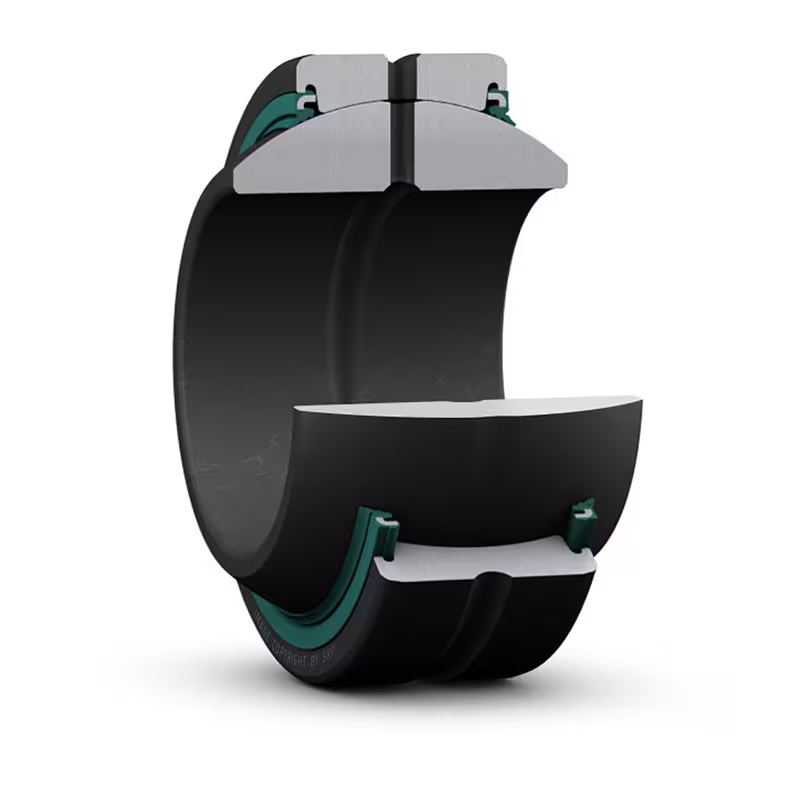
If you take one bearing with a spherical exterior surface and place it inside another bearing with a spherical interior surface, you have created a radial spherical plain bearing. (Say that 5 times fast!). They're mostly useful, in my experience, where you have a sliding motion through the bearing while also sustaining either some movement or oscillation. While they look like a ball bearing, they are not because there is no rolling element. There's simply two low friction surfaces sliding against one another.
Ball
Ball bearings are, as the label on the tin implies, composed of spheres that are rotating to reduce friction and constrain degrees of freedom. They come in 3 main forms (besides sometimes loose that are used in very customized ways): grooved, thrust, and linear.
Grooved
Probably the most common form of ball bearing is the grooved ball bearing. In this configuration, the balls are "captured" in a groove between two outer rings. Sometimes, there are two rows in very heavy load situations, and often they are lubricated and have a seal to hold the lubricant and balls in the right place.
Grooved ball bearings accommodate radial and axial loads in both directions and are very low maintenance.
One of the most common form of these in the maker community is are bearing models 608 (22x7mm for 8mm shaft) and 625 (16x5mm for 5mm shaft). Often you will see the suffix "-2RS" which means that the bearing is sealed on both sides. There are, however a very wide variety.
Note that a industrial high quality bearing, like the SKF 625-2RS will cost 10x as much as what you can get a cheap mediocre quality version for on Amazon or AliExpress. Having said that, the cheap mediocre ones are more than good enough for a vast majority of use cases, and because the designs are almost universally standardized, you can upgrade to a high quality one if you need it without a major redesign.
Personally, I keep a stock of inexpensive 608 and 625 series bearings around for most purposes, and they're good enough to get started.
Thrust
If you take the balls and you arrange them between two plates (rather than rings), you create a thrust ball bearing. A thrust bearing is, almost exclusively, for a radial load. An axial load is likely to dislodge the balls and break things. For example, if you need a lazy susan to rotate smoothly so that your condiments are quickly available to anyone at the table, a thrust bearing is what you're looking for.
It's important to notice that not all thrust bearings have a guide that will keep everything in place as some are loose. Keep this in mind when you're choosing a bearing.
Note that thrust bearings come in roller form as well.
Linear
Linear bearings have a bunch of different names: linear motion bearings, slide bearings, and at least bearing sliders. All of these refer to a cylindrical holder that contains a large number of small ball bearings. These are typically retained in a cage (otherwise they'd fall out), and often are then placed inside of some mounting unit.
Regardless of their exact form, linear ball bearings are very similar to regular plain bearings (bushings) in that they are specifically designed to control movement in one direction. You will see these a lot in things like 3D printers.
Roller Bearings
Roller bearings are very similar to ball bearings, except that the balls are replaced with cylinders of some size and proportion. This allows them to handle more load than a ball bearing while also exhibiting higher precision under most circumstances.
Cylindrical

Cylindrical roller bearings are very similar to ball bearings, except rather than balls in raceways, you have cylinders in there. Because of the increased surface area, this kind of bearing can handle very high radial loads at high speed.
For higher loads, you also will occasionally find multiple rows of rollers in the same bearing. This can, of course, be replicated through the use of multiple bearings.
Cylindrical roller bearings are (if not a plain bearing) what you would typically see on a crankshaft of a high performance machine.
Cylindrical roller bearings can also be found in a thrust configuration.
Needle
Needle rollers are nearly identical to cylindrical rollers except for the ratio of length and diameter of the rollers themselves. While there's no official ratio, typical normal cylindrical roller bearings will have a length to diameter ratio of less than 5:1, whereas needle (hence the name) are greater than 5:1, creating a longer surface for contact, while reducing the relative height of the bearing.
Needle roller bearings can also be found in a thrust configuration, in which case they're "needle roller thrust bearings". Lots of words, but they are very explicit about their design. And like most other bearings, they are available in sealed and unsealed variants. For hobby uses, always choose a sealed one if you can, as it will bring less trouble long-term.
Tapered
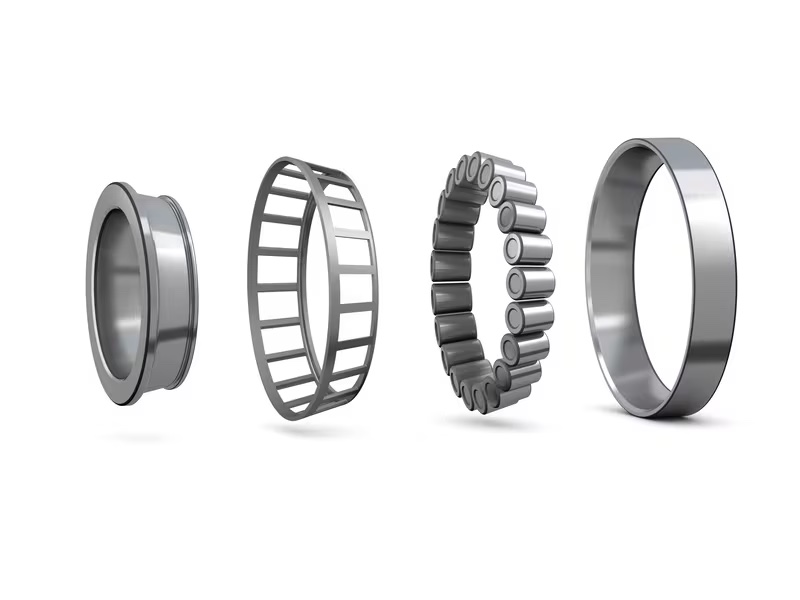
Tapered roller bearings feature two distinct pieces: a cup and cone assembly. The cup is comprised of the outer ring which holds the cone assembly. The cone assembly consists of inner ring, rollers, and cage. This bearing construction accommodates combined (both axial and radial) loads.
One of the neat behaviors of a tapered roller bearing is that, when you have a two row tapered roller bearing assembly, you can adjust one single row tapered roller bearing against a second tapered roller bearing. When you apply an appropriate preload, a rigid configuration can be achieved.
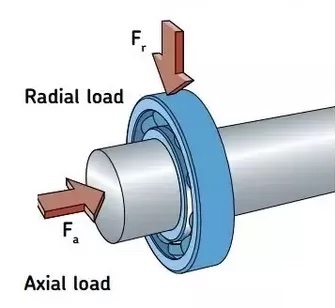

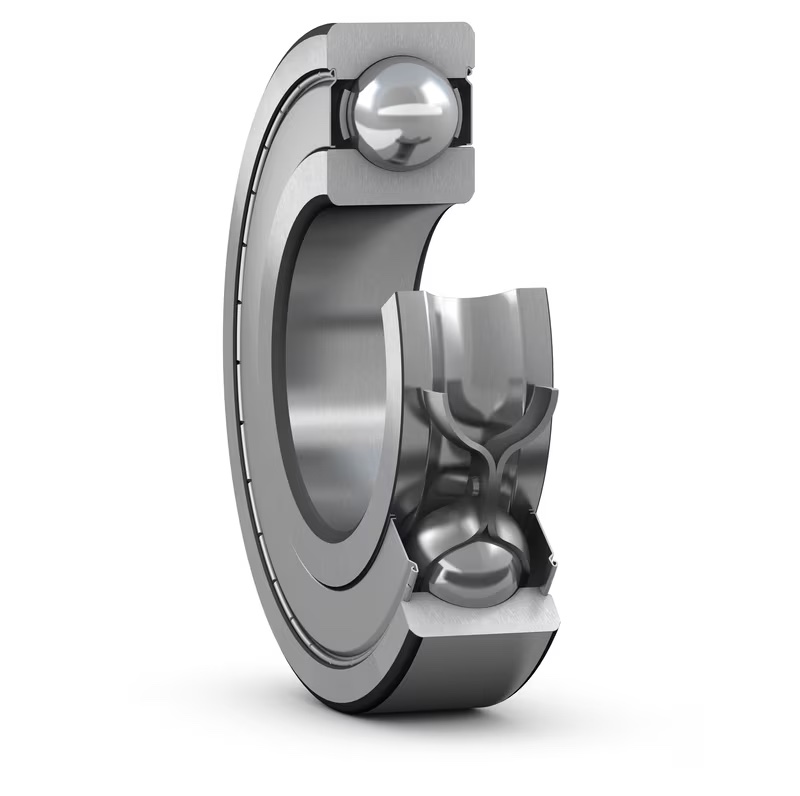
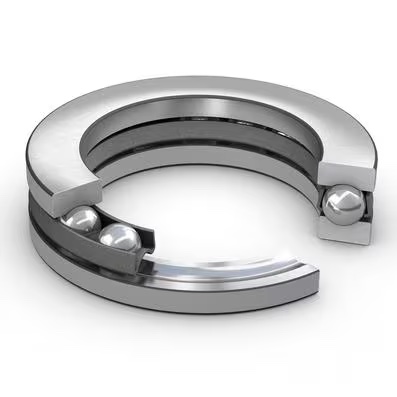
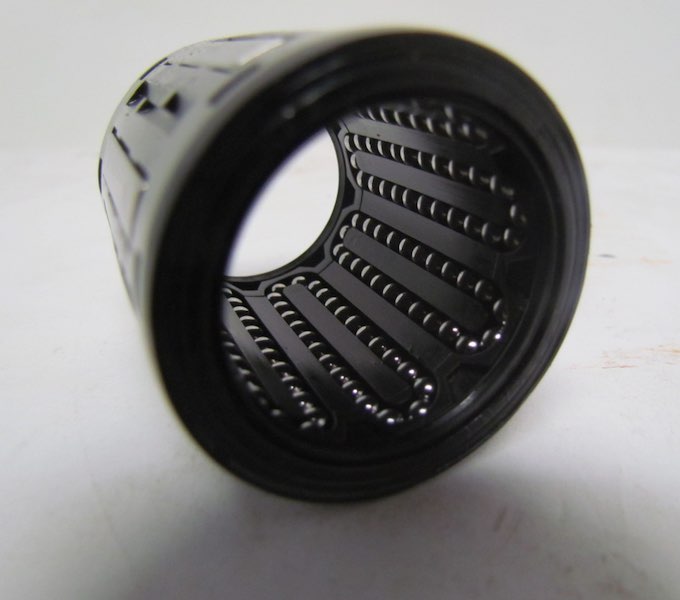
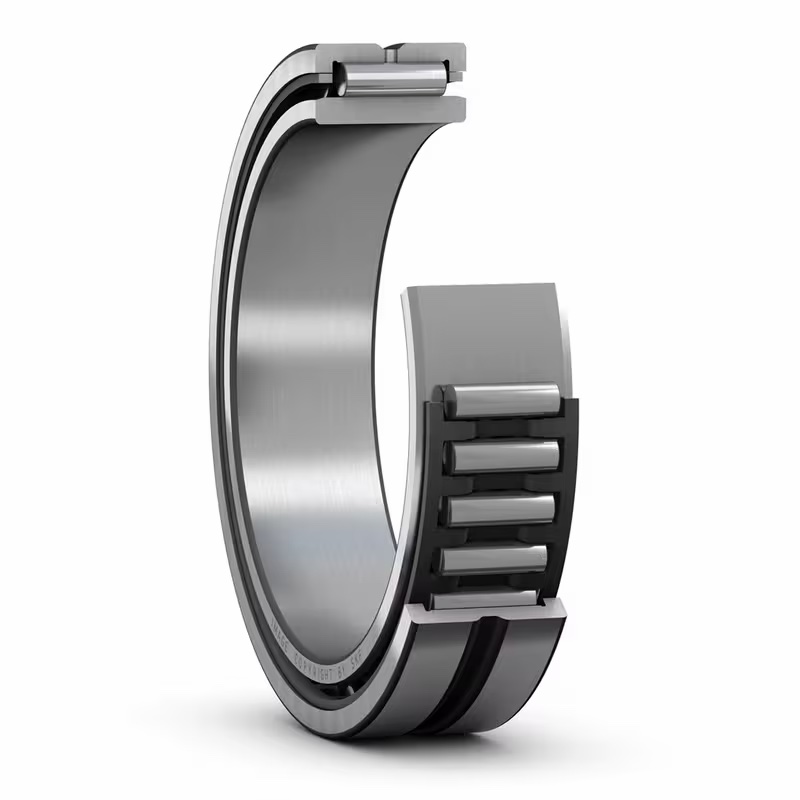
Comments or Questions?
If you have any comments, questions, or topics you'd like to see covered, please feel free to either reach out to me on Mastodon (link below) or open an issue on Github.